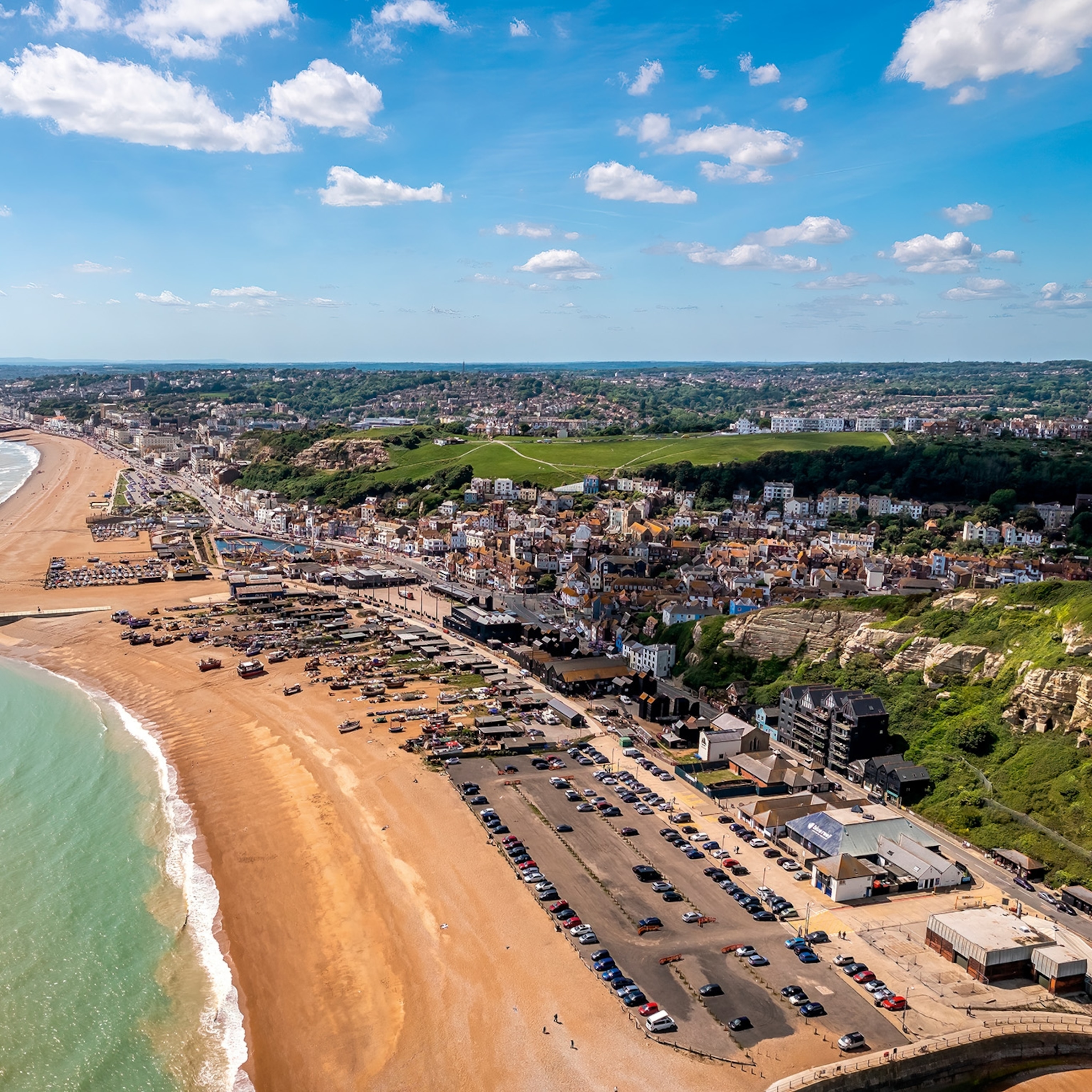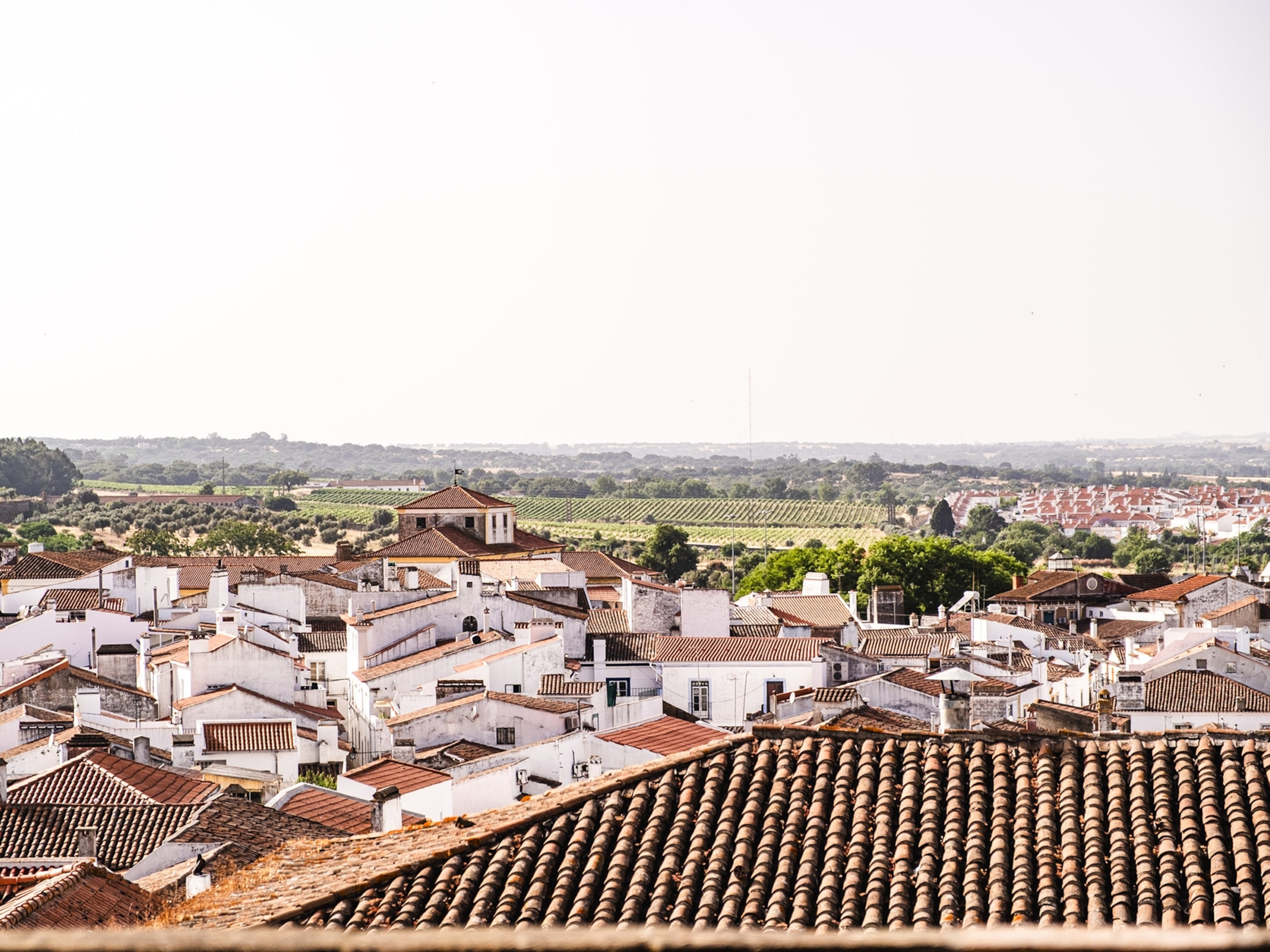
A guide to Bristol, the UK city alive with indie spirit
From Brunel’s gorge-spanning bridge to the graffiti-inked bars of Stokes Croft, Bristol is a city that serves up indie spirit and laid-back West Country atmosphere in equal measure.
If you take a stroll along Bristol’s central Corn Street, keeping your gaze far above the vintage clothing stalls and wooden tables stacked with second-hand books, you’ll catch sight of the striking red-and-white clockface that adorns the Grade I-listed Corn Exchange building, once used by merchants to trade their wares.
Take a second to study the 19th-century clock, and you’ll notice it has two minute hands. The faster is set to Greenwich Mean Time, Britain’s legal standardised time since 1880, while the slower maintains traditional Bristol Mean Time, which — based on the point when the sun is at its highest in the sky — historically runs 10 minutes behind London. An apt metaphor, some might say, for how Bristol has always taken pride in setting itself apart from the crowd.
Growing up in nearby Cardiff, Bristol’s cross-border cousin just 25 miles away, my teenage years were spent listening to animated tales of burgeoning Bristol music festivals (such as the now-annual Love Saves the Day) and all-night skatepark raves (the humble beginnings of iconic Bristol nightclub Motion). Bristol, clearly, was the most exciting place on the planet.
And even now, seeing it with an adult eye, the city maintains an undeniable aura of cool. Permanently on the cusp of the latest trends, or actually setting them, this is a place where street-art-smattered lanes and former-warehouse-turned-tap rooms turn out an impressively diverse food scene where visitors can have lunch in an authentic Italian deli and enjoy dinner in a shipping container styled like a Tokyo izakaya bar.
But Bristol’s identity permeates far deeper than its proclivity for hipster food dens or its love of a good party. Fuelled by a large and vocal student population, the former industrial port city has become a stronghold for counterculture and activism in the UK, particularly around environmentalism, which has fostered a citywide eco-conscious ethos that led to Bristol becoming the first European Green Capital in Britain back in 2015. And, of course, civil rights: a protest drew the world’s gaze in 2020, when a prominent statue of merchant and slave trader Edward Colston was pulled down and thrown into the city’s harbour.
Whether you find yourself at home in the stylish tearooms of Clifton Village or the low-key boozers of Stokes Croft, there’s a sense that Bristol is happy doing things its own way, forging its own path and, dare I say it, ticking along at its own pace.

The best things to do in Bristol
M Shed: The large, free-to-enter museum provides the perfect introduction to Bristol, with intriguing artefacts including wartime posters and Tudor-era treasure hoards bringing to life the city’s history, and insights from local people shedding light on the Bristol of today. Don’t miss the brilliant 21st Century Kids exhibit, where young Bristolians answer probing questions, from ‘What’s your passion?’ to ‘Do you dance?’
Clifton Observatory: A number of spots vie for the title of Bristol’s best view, but the panorama from Clifton Observatory, looking down on Clifton Suspension Bridge, is hard to top. The 18th-century stone structure is home to a functioning, 200-year-old camera obscura, which provides a magnified perspective of the surrounding Avon Gorge. However, many visitors find the views from the observatory’s well-stocked rooftop bar equally appealing.
St Nicholas Market: Even those not planning on loosening their purse strings will feel the tug of vibrant St Nicks. Dating back to 1743, this huge indoor-outdoor market in the city centre is home to Bristol’s largest collection of independent retailers, with street food vendors, record stores, indie T-shirt makers and even a ‘hot sauce emporium’ lining the tangle of narrow indoor laneways, which spill out into the surrounding streets.
Banksy street art: The identity of satirical graffiti artist Banksy may be shrouded in mystery but what’s certain is that Bristol has claimed the father of modern street art as its prodigal son. The celebrated stencilist has left his mark all over the walls of what’s believed to be his hometown. Easy-to-see works include Mild, Mild West, an early mural that depicts a teddy bear attacking riot police on Stokes Croft road, and Well Hung Lover, showing a naked man dangling from a window above a former sexual health clinic on Frogmore Street.
Local theatre: London may have the West End, but Bristol is home to the oldest continually running theatre in the English-speaking world. Bristol Old Vic hosts everything from Shakespeare to experimental shorts in its beautiful Grade I-listed auditorium. For more avant-garde works, try the Loco Klub, housed in the tunnels beneath Temple Meads station, or, for something a little lighter, head to the Improv Theatre in Clifton.
Bristol Lido: First welcoming swimmers in 1850, visitors can still bathe in Victorian splendour with a refreshing dip at this gorgeous courtyard-enclosed, openair pool (pre-booking essential). Those who don’t fancy diving in can lap up the serene surrounds from the lido’s excellent Mediterranean-themed restaurant.

Locals' favourites
20th Century Flicks: Located beneath the zigzagging fairy lights of Christmas Steps laneway, the endearingly ramshackle 20th Century Flicks is one of the UK’s last surviving video rental stores, with more than 18,000 titles in stock. More useful for tourists, however, is the shop’s teenytiny in-house cinema, which can be booked for private use by groups of up to 10 people.
Bristol Cathedral Choral Evensong: If you need some respite from the buzz of Bristol’s busy streets, pop inside the city’s mighty, gothic-style cathedral during the Choral Evensong (sung prayers), that happens most days at 5.15pm. Even those with no religious faith will find the sounds of the organ reverberating around the grand hall incredibly soothing. Intriguingly, the cathedral also sells its own gin.
Redcliffe Caves: Hidden beneath the surface of the city, the man-made Redcliffe Caves were originally dug to mine sandstone in the Middle Ages. Today, the atmospheric tunnels are opened to the public for special events, including a series of spooky film screenings put on by the Bristol Film Festival during Halloween.
Where to shop
Bristol Blue Glass: Glassblowing has been prevalent in Bristol since the 18th century (when the city was home to 60 glassworks), and today The Original Bristol Blue Glass Company continues to create beautiful, teal-tinged glass ornaments and jewellery using the same antiquated technique. Lessons in this traditional craft are also offered at the company’s studio.
Stokes Croft China: Perhaps the perfect Bristol souvenir, Stokes Croft China’s humorous mugs are designed by local artists and emblazoned with alt-political messaging like ‘f**k austerity’ and ‘boycott Tesco’. Sales from the shop, which also stocks posters and — less conventional — decorated toilets, go towards funding local community projects.
Guilberts Chocolates: The world’s first solid chocolate bar was created in Bristol back in 1847, but today only one independent chocolate-maker remains in the city. Delighting customers for more than 100 years, Guilberts Chocolates still crafts its sweet treats using age-old methods, with every chocolate hand-dipped before being sold out of its Victorian shopfront on Small Street.

The best restaurants
Baba Ganoush Kitchen: It may serve what it terms ‘Jerusalem falafel’, but this beloved cafe could hardly feel more Bristolian. Wonderfully low-key (it’s set in the shadow of the A4032) and plastered in street art, this neighbourhood spot in St Pauls is encircled by a handful of wooden tables, where everyone from students to pensioners grapple with the hefty, heavenly wraps.
Sonny Stores: Having previously worked as sous chef at one of Bristol’s best-loved Italians (Pasta Ripiena, also highly recommended), Pegs Quinn opened Sonny Stores with his wife Mary Glynn following the lockdown in 2020. Sitting on a pretty residential street in Southville, the welcome here is generous and the seasonal Italian cuisine — the homemade stuffed pasta in particular — is gorgeous.
Box-E: Like many top chefs in Bristol, Elliot cut his teeth in the high-pressure kitchens of London, before leaving the Big Smoke to open BOX-E: a fine dining restaurant housed in a renovated shipping container in the trendy, new Wapping Wharf development. The pint-sized venue plates up pan-European dishes, from Brixham scallops to hangar steak, best sampled via the seven-course tasting menu.
Where to go in the evening
The Coronation Tap: England’s West Country is famed for its cider production, and the wood-walled, wood-floored Cori Tap, as it’s affectionately known, is purportedly the oldest cider house in Bristol. It’s one of those pubs where everyone seems to have a story about, usually featuring the venue’s very own (very strong) Exhibition cider which, rather sensibly, is served only in half pints.
Thekla: Bristol offers live music in pubs, clubs and parks, but for sheer quirkiness, nothing can compete with Thekla, a gig venue on an old German cargo ship permanently docked in Bristol’s harbour. Everyone from blues guitarists to up-and- coming indie bands take to the ship’s small stage to rock the boat most evenings.
The Milk Thistle: The Bristol speakeasy everyone can’t stop talking about, The Milk Thistle hides behind a big black door right in the city centre. Spread across four floors, the aesthetic is meticulously sculpted (all red leather sofas and twinkling chandeliers) and the custom-made cocktails expertly crafted. With regular events, including themed parties and gin tastings, it’s an unmissable night out.

Where to stay
Towed Town Camping: Set in a warehouse just a short walk from Temple Meads station, Towed Town Camping offers the joys of a British caravan holiday in the great outdoors, indoors. Guests bed down in one of six kitschy-cool caravans, with fairy lights dangling overhead and artificial grass underfoot.
Artist Residence: The long-awaited Bristol outpost of the trendy Artist Residence hotel brand finally opened in a Grade-I listed former boot factory in Stokes Croft. Its 10 different room categories range from Broom Cupboard doubles to the Artist Suite. Breakfast is taken in the Library bar, with a downstairs hangout space and kitchen due to open later this year.
Hotel Du Vin Bristol Avon Gorge: As a spa and hydropathic centre in the Victorian era, the Avon Gorge attracted aristocrats from around the country, and, in its current iteration as a Du Vin-branded hotel, this Clifton mainstay has a similar allure. Its plush rooms all provide premier views over the gorge and suspension bridge, which non-guests can enjoy from the adjoining White Lion pub.

Getting there and around
Bristol’s Temple Meads railway station, connected to the Great Western Railway network, is accessible from most of the UK including direct services to London Paddington (journey time: 1h35m), and Cardiff Central (50m). Bristol Airport has both domestic and international services. It’s accessed by the A1 bus and the journey time into central Bristol is 35m.
Central Bristol is fairly compact and easy to navigate on foot, albeit hilly in places. Alternatively, visitors can hire bikes from numerous places including Bristol Electric Bike Hire. For journeys further afield, the bus is your best bet. Number 8 connects Temple Meads and Clifton. Consider a day pass (£6) if making multiple journeys across a 24-hour period.
When to go
With its westerly Atlantic-facing location, any time of year can be rainy, but spring and autumn are likely to offer good weather. Several festivals, including the Bristol International Balloon Fiesta, can make a summer visit appealing. In November and December, the Broadmead section of the city is taken over by a huge Christmas market. Be sure to wrap up warmly as temperatures can drop to freezing.
More info
Visit Bristol.
Pocket Guide to Bath, Bristol & The Southwest, Lonely Planet, £7.99
Banksy’s Bristol: Home Sweet Home by Richard Jones, Tangent Books, £15
How to do it
Graft offer graffiti-themed walking tours and art workshops, focusing on Banksy’s legacy.
Published in the March 2022 issue of National Geographic Traveller (UK)
Follow us on social media
Facebook | Twitter | Instagram







